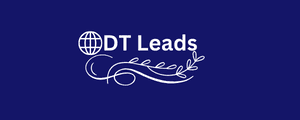As a result of advances in medicine, home polysomnography provides more comfort to the patient. After all, he can sleep in his own bed and maintain nocturnal habits, which results in conditions close to his routine . This factor is important, as it makes the examination records faithful to the patient’s dynamics, collaborating for the correct diagnosis. In the next topics. I explain how home polysomnography is performed and its purpose. I also bring tips to speed up the procedure report, with the support of telemedicine . What is home polysomnography? Home polysomnography is an exam that monitors various bodily functions while the patient sleeps at home . As I mentioned in the introduction, this is a technological innovation made possible by portable equipment . These are usually installed by a technician in the patient’s room so that records are captured properly. Depending on the medical indication and available devices.
The procedure may include
Electrocardiogram (ECG)to show the electrical activity of the heart Electroencephalogram (EEG)to monitor the brain’s electrical impulses oximetrypulse to measure the level of oxygen in the blood Electromyogram to measure muscle movement Electro-oculogram to identify the phases of sleep. What moment they start with eye movement (indicative of REM sleep– Rapid Eyes Movement ). As we will see below, the indications for Afghanistan Cell Phone Number List the exam are vary. What is polysomnography use for? Polysomnography serves to investigate suggestive symptoms and detect sleep-related abnormalities . Tiredness, slow thinking and memory lapses are among the signs that sleep has not been restful. According to a study Carrey out by Unifesp (Federal University of São Paulo), 76% of Brazilians suffer from problems that reduce the quality of sleep . One of the most common is obstructive sleep apnea. Which affects one in three people. The condition causes frequent breathing pauses. While the individual sleeps.
Those with the disease may experience snoring
Fatigue and a drop in productivity, in addition to being at greater risk of developing high blood pressure and inflammation. Including vital organs such as the heart. Other disorders DT Leads diagnosed via home polysomnography are. Hypopnea. reduced airflow during breathing. Narcolepsy causes sudden and uncontrollable drowsiness Restless legs syndrome: characterize by involuntary movements that prevent the patient from resting Bruxism : disorder that causes the person to grind their teeth involuntarily, especially during sleep. However, there are sleep disorders that are not the subject of polysomnography, as I comment below. Limitations of home polysomnography Despite the advantage of convenience and proximity to.







